After finishing our Great Loop, we looked back on our original boat search to see what we thought we wanted compared to what we actually needed. Here’s the original post: Buying a Boat for The Great Loop.
I’ll start by summarizing each point on our original List of 20 and then comment on each from a Gold Looper point of view. 🙂
Our Perfect Great Loop Boat
Newer … maybe 10 years old-ish. Less maintenance intensive with minimal exterior teak. Update: Our 2007 Mariner 40 was 10 years old when we started our Loop. We had no delays dealing with broken anything or any issues with the boat during our 330 days cruising the Great Loop.
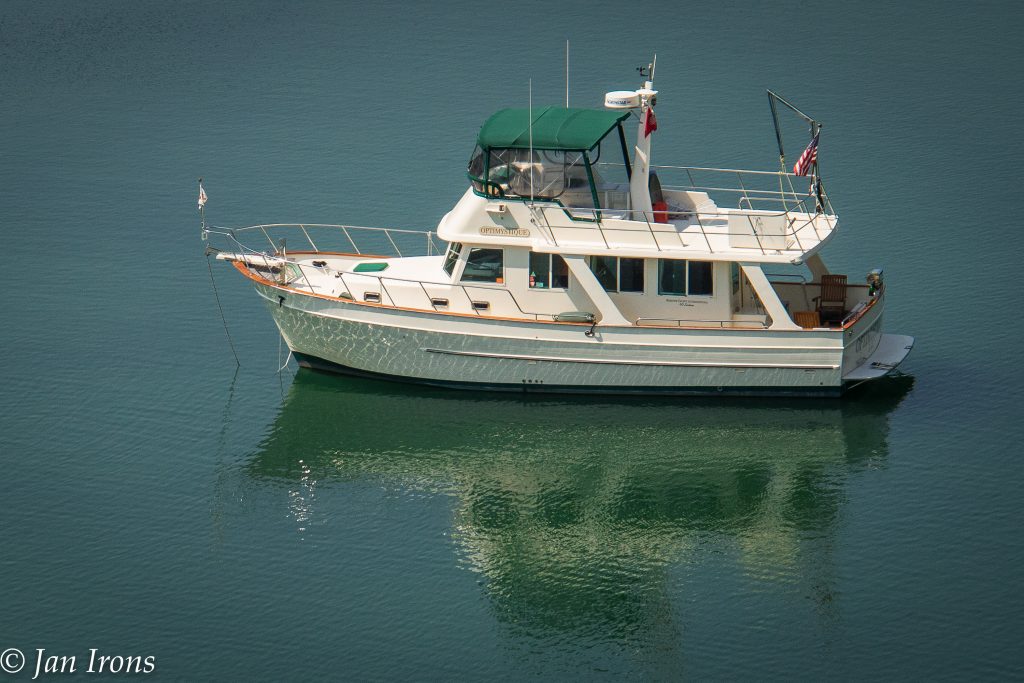
Budget: It’s important to have a set budget and not become side-tracked by amazing boats outside the limits of our finances. Update: As it turned out, we love our Mariner and aren’t inclined to second guess whether “the next level” of boat (and financing) would have improved our experience. Somehow I seriously doubt it.
Re-sale value after The Great Loop. Assume that we’d sell the boat after our Great Loop adventure. Update: Our Mariner 40 is for sale. For the winter, we’re in one place so it’s easier to arrange viewings, inquiries continue, so hopefully the re-sale value issue will resolve happily for all.
Adequate hull construction – no cored hull. After all, cruising down rivers and even the ICW submerged logs and other obstacles may be a challenge. Update: Yes, we had logs and flotsam and jetsam …. on the rivers section and the east coast ICW, we were happy we have a hull that could take a few bumps and bangs.
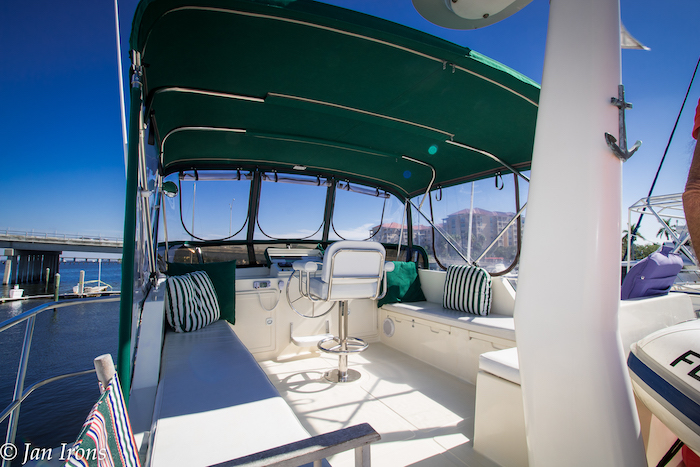
Outside steering – preferably enclosed, good visibility. Update: We were right, our flybridge and upper helm is one of our favorite parts of our boat. For us, a big part of the fun of doing the Loop was watching the view, the wildlife, river action and whatever else there was to see. And docking IS much easier with an all around view.
38 to 42’. We want a boat with a second cabin in case we have guests. Update: Our 40′ was the optimum size for us. The bunk room was nice, but not a necessity. We learned, just like cruising the Caribbean, we had fewer guests than we hoped. And some guests chose to just take a day cruise.
Max Draft: 4’ Update: There were times we wanted less draft to tuck back into sheltered anchorages and times we wished for the deep draft of the sailboat we used to own for stability (in open waters – Lake Michigan, Florida Crossing, the Chesapeake and Delaware Bays). So our choice of a 4 foot draft was probably the best compromise we could have made. I certainly wouldn’t want to do the Loop with more!
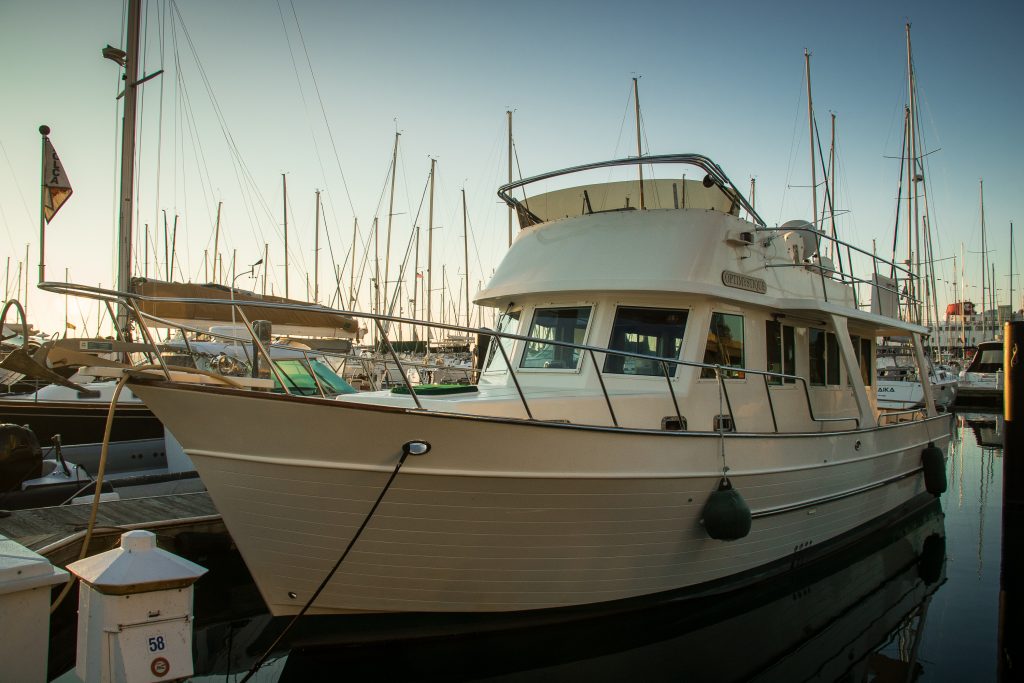
Max Height: 17’-ish. Update: Flexibility was key for us. With the bimini up on the flybridge, we’re at just under 17′. With the radar mast up, we’re just under 20′. We laid the radar mast down for part of the Erie Canal and part of the Trent Severn. For the ultimate cruise down the Chicago River through downtown, we opted to take the bimini canvas upstairs down so our clearance was 13’3″ providing an unobstructed view of the skyline. When it got hot, we put the canvas back up underway and had no trouble with the infamous 17′ bridge. (BTW, it took less than 15 minutes to take the bimini down, not labor intensive at all.)
Engine: single diesel. The question becomes low engine hours versus normal engine hours. Talking to diesel mechanics, we learned that sometimes 10 year old boats with less than 1000 hours are more troublesome than boats where the diesel has been used and maintained well. Update: Not being mechanics, we can’t speak to the engine hours, but we do know we started the Loop with 3,400 engine hours and now we have 4,200 engine hours and our Cummins 230 diesel just purrs along. We never had to stop to seek out a mechanic, never had downtime due to engine issues. I can’t say that about many of our friends, including a couple with brand new boats.
Fuel Efficient – prefer 2 – 3 gph at 7 knots or better – Update: CHECK! We thought this would be a challenge, we were wrong. Our single engine Cummins 230 sipped 2.7 gph running at 8 to 8.5 mph which was good enough for our budget.
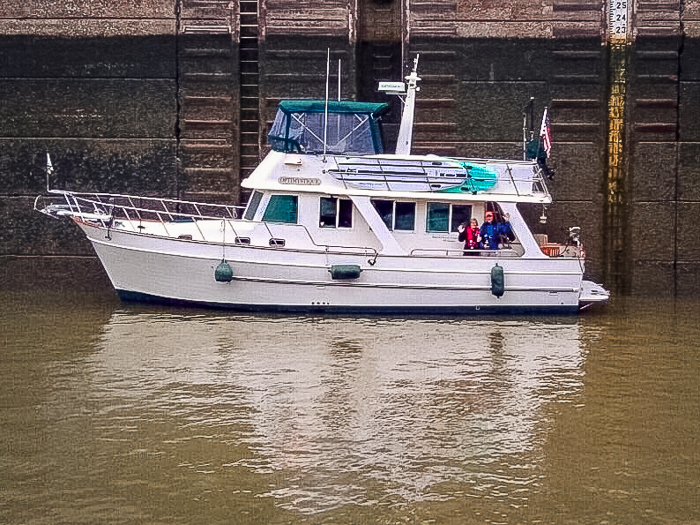
Adequate Power for maneuvering in current/wind in close quarters. Bow/stern thrusters to help. We understand currents & turbulence can be issues especially around locks and that it’s necessary to have enough power to be safe. Update: Power was never an issue. Our single Cummins diesel always had enough power. Maneuverability was never an issue in the locks. Maybe twice in over 5,000 miles we had to “wedge” between boats at a facedock (i.e. long dock, no slips) where we would have enjoyed having stern thrusters, but our bow thruster was adequate. We learned we can control the bow with the bow thruster, so we just changed our approach now I cast a stern line or a midships line first to the dockhand and once attached, controlling the bow was no problem at all.
One head is fine, separate shower w/ adequate space to use. Update: The original holding tank was 20 gallons and the original head was a Raritan that used a gallon of water to flush. Not adequate. We had a 36 gallon custom holding tank installed along with a Vacu-Flush head using a pint of water and never had an issue – not even when Hurricane Michael wiped out all the pump out facilities between Ft. Walton Beach and Gulfport – a couple weeks worth. Our shower is almost as good as taking a marina shower so we used it more than anticipated.
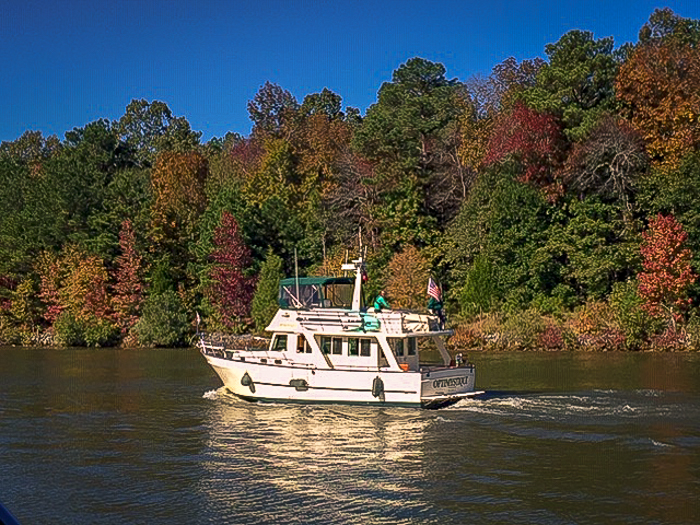
Heat, A/C. Update: There were several nights we needed the heat and several days (Green Turtle Bay on Kentucky Lake in October comes to mind) where it was HOT and we used the A/C. Perfect.
“Real” galley – Propane stove, fridge bigger than dorm size & microwave. Update: No issues for us. Several of our friends had issues with lack of refrigerator space or refrigerators that demanded too much power to go without shore power overnight. We didn’t.
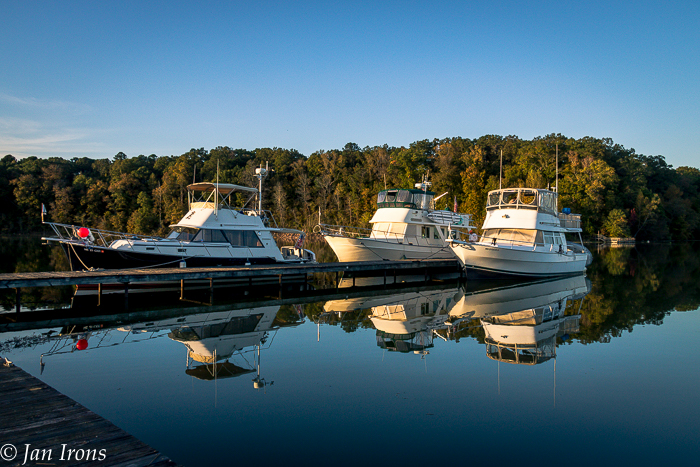
Adequate battery power/inverter/generator for anchoring out. Update: We had adequate battery power as well as generator power to anchor out, stay at a lock wall or otherwise go without shore power while still running our refrigerator/freezer and chartplotter. Several of our friends did not, so make sure you have enough battery power to last through the night – or unplug your refrigerator overnight.
Adequate Ground Tackle, with electric windlass, prefer chain to rode. Update: Our boat came with an electric windlass, plow style anchor and 50 feet of chain attached to rode. We prefer to sleep all night without a worry, so we upgraded to the Mantus 55# with 150′ of 5/16 high test chain spliced to 150′ of 5/8 8 braid nylon line.
Adequate Electronics. Our first trip from Annapolis to Ft. Myers Florida, we cruised with a Magellan GPS with no screen other than a pointer arrow, paper charts and cruising guides and had no complaints. Latest electronics are nice but as long as the boat has a GPS, depth sounder, compass, a VHF and adequate autopilot, we’ll be good. David would like AIS and radar but they’re not requirements. Update: Our electronics are adequate, not brand new, but we upgraded to Navionics Plus charts and added my iPad with AquaMaps and Active Captain. We also have AIS send and receive which after cruising the rivers, I would not be without. Radar was on the boat, we only used it one day in the fog on the Chesapeake. I’m not convinced it’s an absolute necessity – on the other hand, if we’d suddenly been enveloped in fog crossing from Carrabelle to Tarpon Springs, I might have a different view.
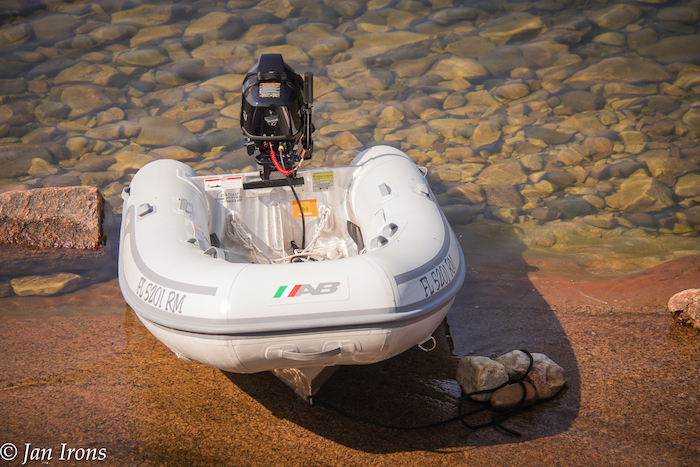
Good Dinghy 9.8-ish hp Yamaha or Tohatsu; dinghy & outboard storage system Update: We replaced the heavy 10 1/2 foot fiberglass RIB and its 15 hp Yamaha with a considerably lighter AB 9.5 Aluminum RIB and a 9.8 hp Tohatsu and LOVE it.
Flat screen TV & other “nice but not necessary” extras. Update: Optimystique came with a small flat screen TV – we added our portable Wineguard Satellite Dish and DirectTV receiver from home and had DirectTV in most places – even at anchor one night on the Mississippi.
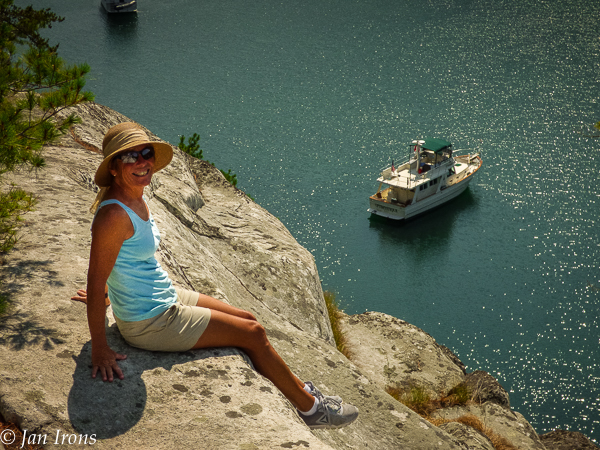
Attractive Appearance – I love a dark hull, but it’s not a requirement. What is a requirement is a boat that makes us feel good when we dinghy up or walk down the dock each day – something we’re proud to own. Update: Optimystique still makes my heart throb every time I walk or dinghy up. Personal preference, but I think our boat is stunning … still.
As it turned out, our original wish list for our Great Loop boat was pretty darned close to what we needed during our Great Loop. After completing our Great Loop Adventure, we have decided to move on to future adventures which sadly don’t include a big boat. So Optimystique is for sale after we finish our Loop. Click here for the preliminary listing.
Good Luck finding your special Great Loop (or cruising) boat! I wish you the same satisfaction and pleasure as we had with Optimystique! Cheers! Jan & David
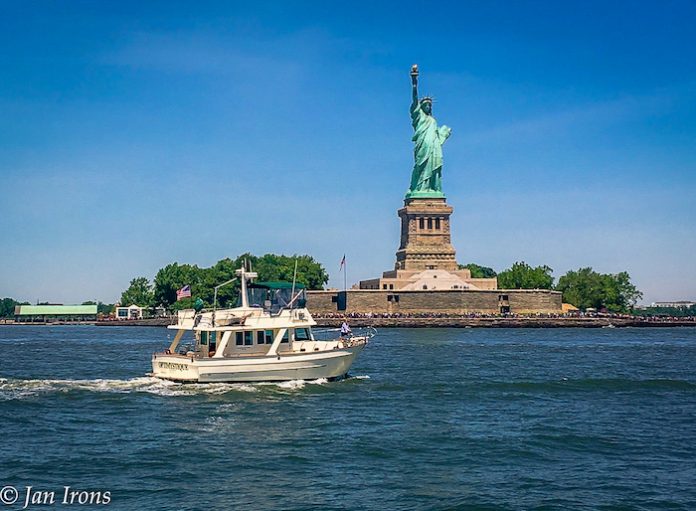
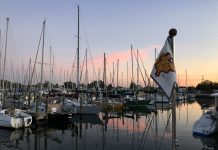
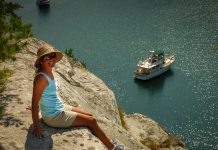









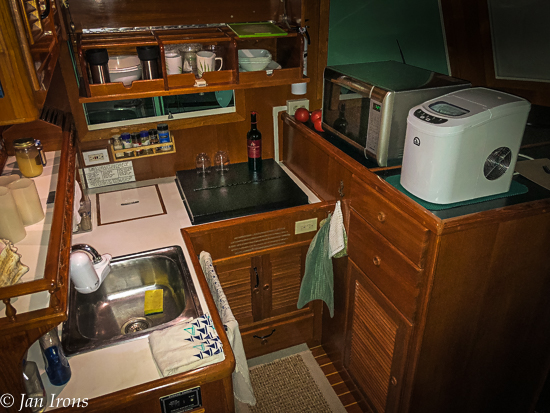

Nicely written. You folks are a great resource!
Thanks Jeffrey!
Very interesting read – thanks for sharing!